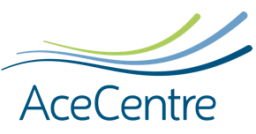It can feel overwhelming to know where to begin when considering the best way to teach literacy to learners who use AAC, especially if you have not had any prior experience of AAC users. You will often find that generic literacy programmes are not suitable for these learners and do not appropriately meet their needs. It can be a challenge to know where to get started, especially for learners in the early stages of their communication journey. This blog offers some ideas to help get you started.
Why is Literacy important?
Learners using a symbol-based vocabulary will be limited to the symbols/words that other people have decided to put on their AAC system. It is not until that learner is able to spell (giving them an unlimited vocabulary!) that they are truly able to say whatever they want to say and ensuring full autonomy over their communication. Therefore, it is important to have high aspirations and give all learners the opportunity to develop their literacy skills.
There are 2 distinct strands of literacy teaching identified by Karen Erickson and David Koppenhaver (2020) which have been developed specifically with learners who use AAC in mind. They are centred around 4 key questions about the learner.
- Does the learner know most of the letters most of the time?
- Do they engage actively during shared reading?
- Do they have a means to communicate and interact?
- Do they understand that writing involves letters and words?
Dependent on whether you answer yes to all 4 questions or no to any of these will determine whether you should will follow an ‘emergent’ (early) literacy or ‘conventional’ (formal) literacy pathway of instruction. In this blog we will focus on activities that are appropriate for a learner with ‘emergent’ or early literacy skills.
Self-Directed Reading
During self-directed reading, learners independently choose from a wide variety of text types—including audiobooks and eBooks. It’s essential, however, that all our learners have access to printed materials without symbols supporting the text.
Shared Reading
Shared reading occurs when a learner in the early stages of their literacy journey and a more experienced reader share a book together. Again, symbol supported text should not be included in the book/text being read. However, ensuring access to (symbol-based) AAC systems is an important part of shared reading as it allows the beginning readers a rich opportunity for communication and interaction, as it encourages them to connect verbally and symbolically with the text. The more experienced reader supports this learning process by modelling how to use the AAC system to make comments and engage in conversation around the book.
When engaging in shared reading, aim to follow the CAR framework (Comment, Ask, Respond) to promote interaction:
- Comment: “Wow—LOOK, a lion!”
- Ask: “I wonder if you LIKE the lion?”
- Respond and Expand: “You’re frowning, so I think you DON’T LIKE the lion!”
Examples of paper based AAC symbol charts which can be used during shared reading are found on our website here: Resources | Ace Centre
Our website also has an example of a shared reading session of the story ‘The Night Before Christmas’.
Independent Writing
Having the chance to write or ‘scribble’ helps learners understand that letters and words carry meaning. For individuals who find it hard to hold a traditional pencil, this foundational experience can be challenging. We can offer the same valuable writing opportunities by using adaptations such as alternative pencils or other assistive tools. Ace Centre have some examples of alphabet charts here.
Shared Writing
Shared writing is a collaborative literacy activity where teachers and learners jointly create a piece of text. One approach to this you can try is ‘Predictable Chart Writing’. This has 5 distinct tasks, which include:
- Write the chart – Begin by introducing a sentence stem (e.g., “I like…”) and inviting students to complete it with their own words.
- Revisit & inspect – Reread the chart together, pointing to words, clapping or chanting, and drawing attention to elements like capitalization, punctuation, or spacing.
- Cut & reconstruct – Learners cut a sentence strip into individual words, then rearrange them to rebuild the sentence in correct order.
- Be the sentence – Learners hold word cards (or physically position themselves as words) and sequence into the correct order as the sentence is read.
- Create a book – Learners illustrate each sentence and compile the pages into a simple class book for display and repeated reading.
An example of predictable chart writing can be found on our website here.
Letters and Sounds
Another important foundational skill to develop in early literacy learners’ is to learn letters and their corresponding sounds. Strategies include:
- Letter spotting in real life: Encourage learners to find letters in their surroundings—start with meaningful ones like those in their own name. These are essential building blocks for reading and writing.
- Playful rhymes or songs: Create or sing fun rhymes and chants that highlight particular sounds to strengthen phonemic awareness. This boosts sound awareness and makes learning enjoyable and memorable.
- Syllable clapping: Break words into syllables—by clapping, tapping, or stomping—so learners grasp that words are made of more than one sound. This helps children understand word structure and supports later decoding skills.
Find out more information by downloading our Getting Started with AAC and Literacy leaflet or join on of our Ace Centre Learning courses here.
Erickson, K. A., & Koppenhaver, D. A. (2020). Comprehensive literacy for all: Teaching students with significant disabilities to read and write. Paul H. Brookes Publishing Co.
Written by Meaghan Ebbage-Taylor, senior AAC Consultant at Ace Centre. She has over a decade of teaching experience in mainstream and special education, supporting pupils with Speech, Language and Communication Needs, using both paper-based and electronic AAC. Meaghan co-authored AAC and Aided Language in the Classroom and is passionate about AAC literacy, presuming competence, and ensuring all learners have opportunities to read and write.
